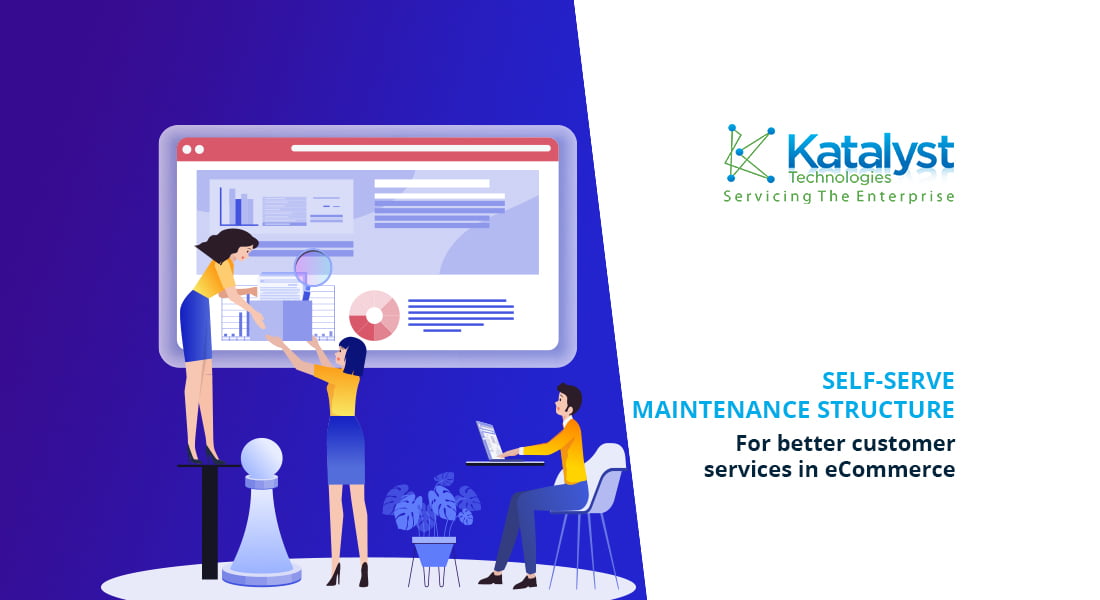
As the online shopping trend continues to develop, online customer service is becoming essential and turning significant to sustain in the market. However, companies are wary of accepting eCommerce because they feel they cannot offer personalized service and relationships. They always provide customers through other channels. In 2019, an estimated 1.92 billion people purchased goods or services online, and during the same year, e-retail sales surpassed 3.5 trillion U.S. dollars worldwide and as per the statista, ecommerce share of is expected to be 22% of total global sales in 2023, which clearly shows that customers are shifting towards online shopping. Getting eCommerce right actually enhances those customer service in ecommerce relationships by working with your sales team that isn’t in competition with them.
People spend more time shopping online than ever before and expect the same shopping experience as in their personal lives, but the requirements for B2B shopping aren’t quite the same. Providing self-service for customer service in ecommerce is essential for reproducing a personalized shopping experience. It also takes the strain off your team by eliminating physical and time-consuming tasks like managing waiting times, checking inventory, or tracking payments. Buyers now expect an enhanced B2C online experience. Here are some key differences that are reflected in the account functionality.
This self-service functionality comes up with:
Details regarding the account:
Enable customers to update their name, title, shipping, billing addresses, payment card details, and passwords. It may also collect personalized information to fit future content using marketing and merchandising tools. The event reminder option allows users to mark a specific date as a purchase reminder based on the event or date. It is perfect for rearranging simple elements or long-term projects.
View order and order history (from multiple channels):
Collect sales orders from any sales channel, even offline (requires integration into an external system where order information is stored, for example, an ERP system) and show it in user accounts. You can then access individual details for each order. You can check each order’s status (both completed and pending) and track each delivery item with additional shipping information.
View, pay, and print invoices online:
Allows users to view in detail all previous invoices, including any paid or payable invoices. Any outstanding invoices can be added to the cart and paid using a credit/debit or credit card stored in the account, which helps the merchant team process payments.
Ordering/rearranging tools (quick order, saved basket, list):
There are various eCommerce website solutions available to make reordering easier, including stored baskets, quick order forms (with CSV upload for faster purchases), and a list of saved quick orders. View only your line items and regular order lines. Simple and easy reset is essential for short-time B2B users.
User/boss administration and sub-accounts:
Add, edit, and delete users and apply permissions to everyone to determine which users can access and control themselves and other users. User permissions define purchasing power, billing and shipping addresses, access to reports, processing returns, access to billing and credit information, and much more. The primary user can define permissions and access for all other users and determine what is available.
Inventory management / VMI:
Enables the customer to keep the agreed inventory for each of them and ensures easy replenishment if the inventory falls below the stock threshold. When the merchant performs an inventory check, shortages are automatically ordered online for this location and account within the agreed time.
Provide instant access to your product inventory and prices:
Give your customers access to product data, images, stock levels, inventory, and customer prices by downloading them from your user account or secure FTP. This can be a complete catalog or a customer-agreed product list – ideal if you sell to customers who have their eCommerce store or need this data on their internal systems.
The tool automatically sends offers to customers’ accounts for items they haven’t bought in a long time or haven’t tried to encourage them to increase their costs. Reports are created that determine which brands or products they have not purchased for a certain period. Offers for specific brands are then made before being shown on their account and via an automatically triggered email. The tools are smart enough to remove certain brands, items out of stock (and therefore not available for purchase), low-margin items, or when another customer from the same company buys it.
While B2B eCommerce will only wholly replace your sales team in certain cases, making sure your B2B customers can serve themselves as efficiently as possible is critical to your online success. This not only enables employees to venture into a new business, but it also empowers customer service in ecommerce and delivers on profits.
Contact us today to get more insights regarding Katalyst’s robust and advanced B2B eCommerce solutions.

